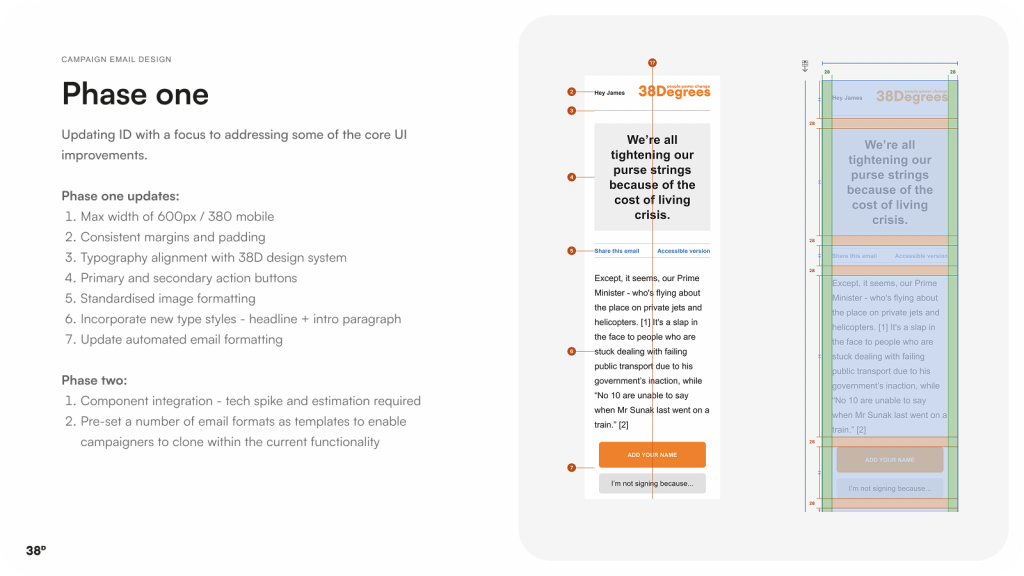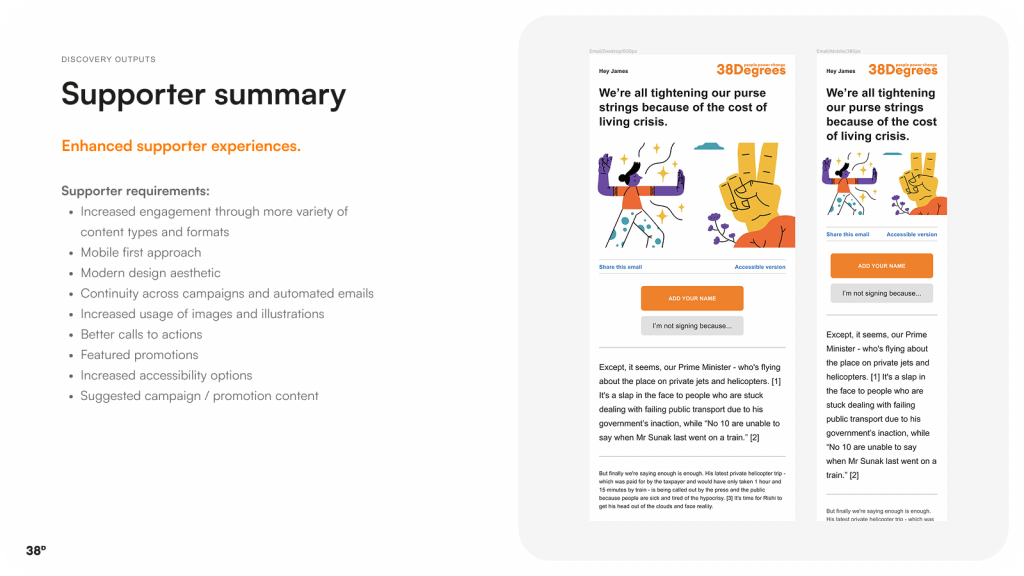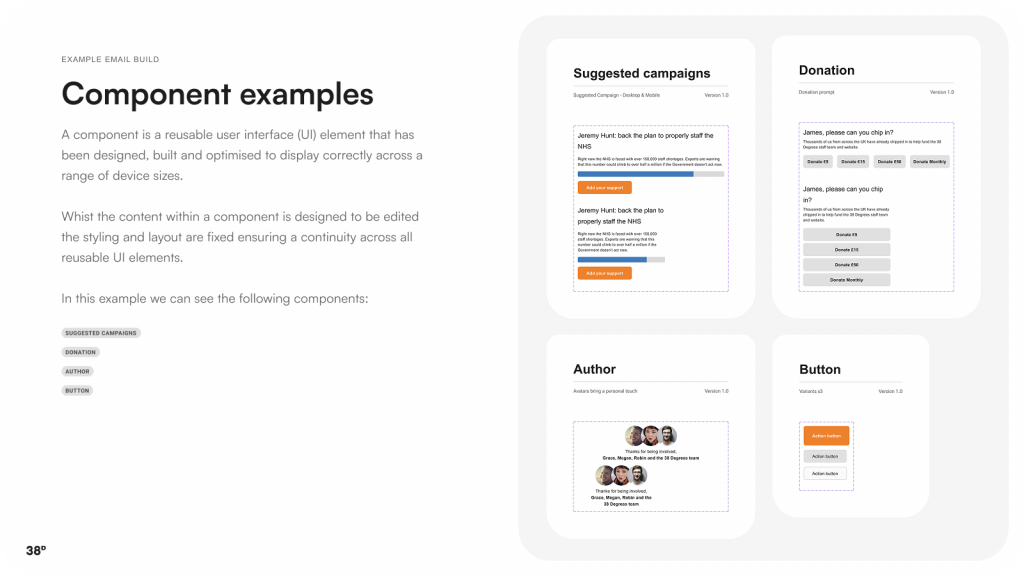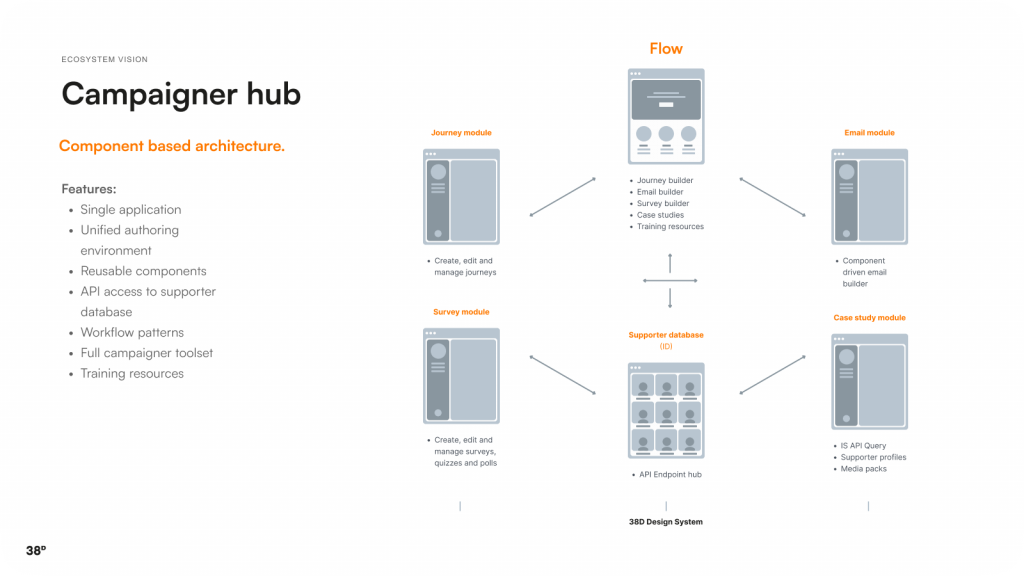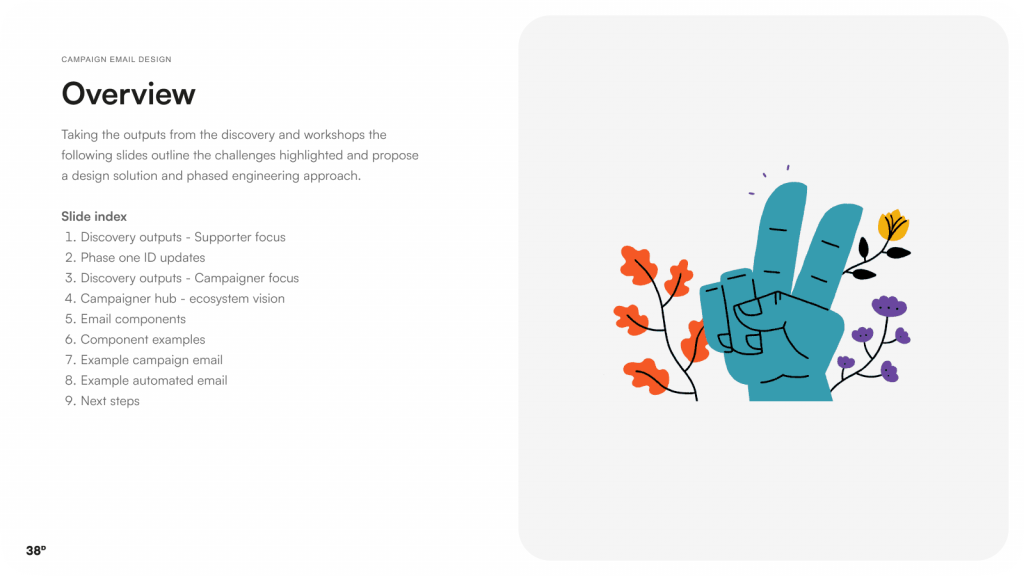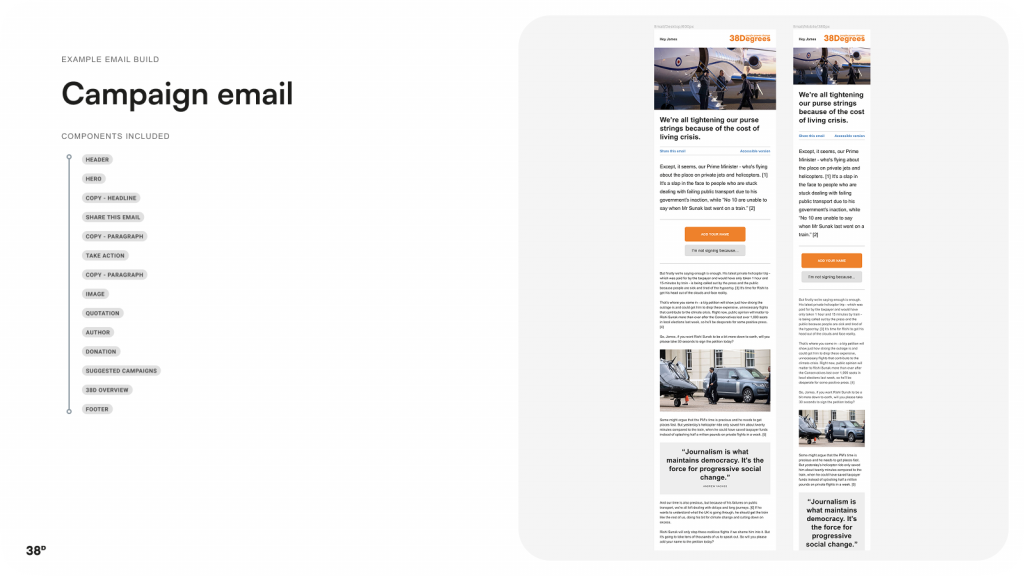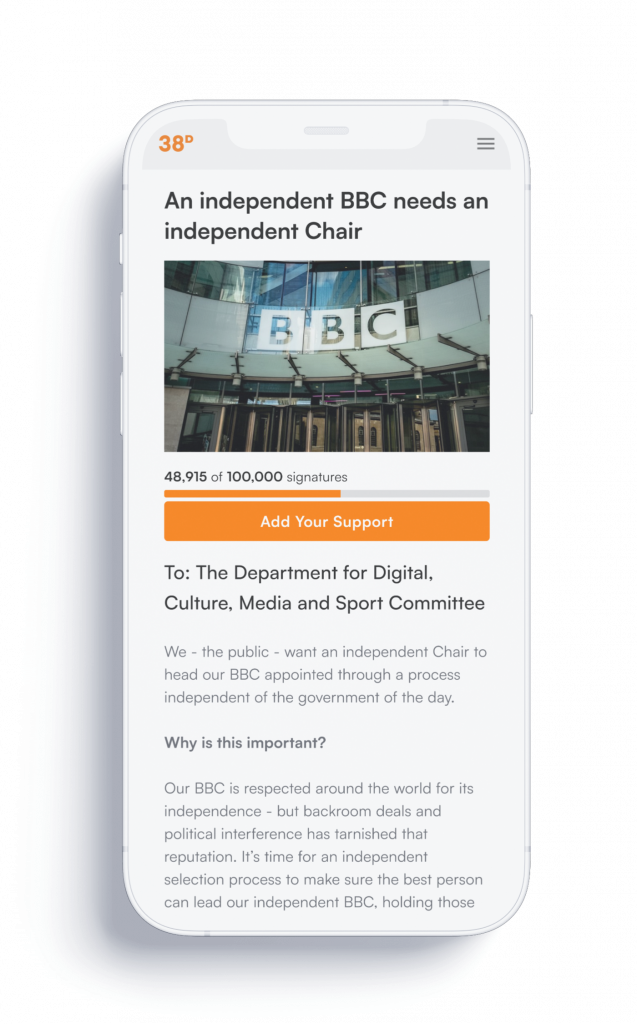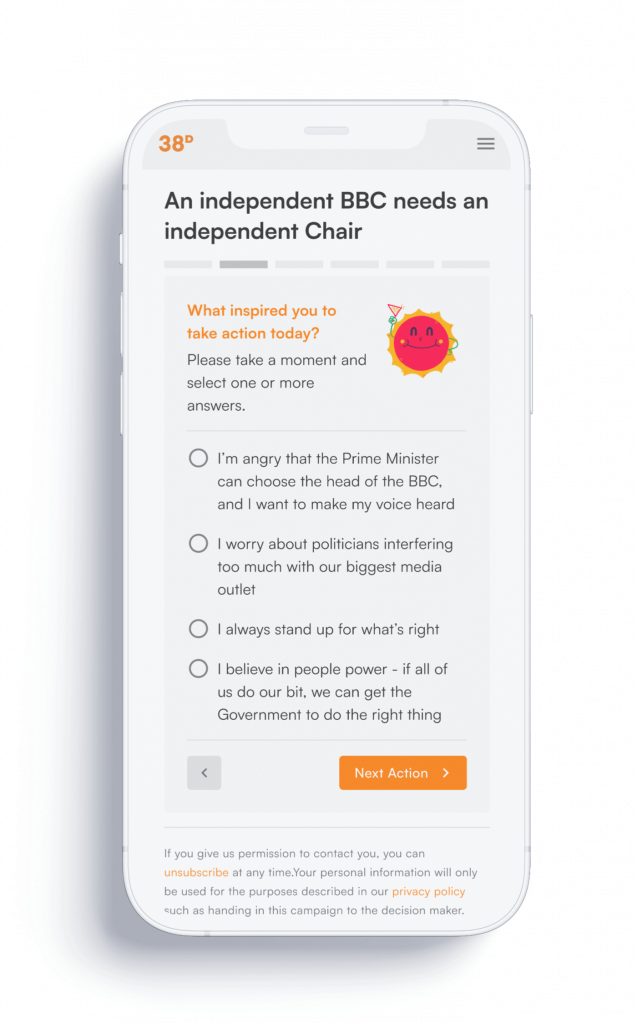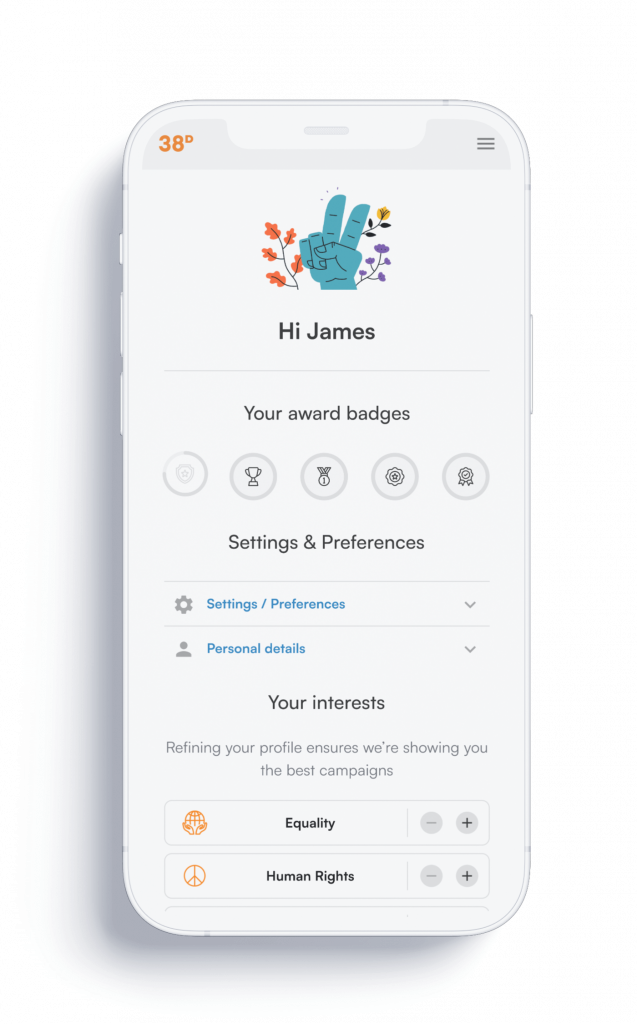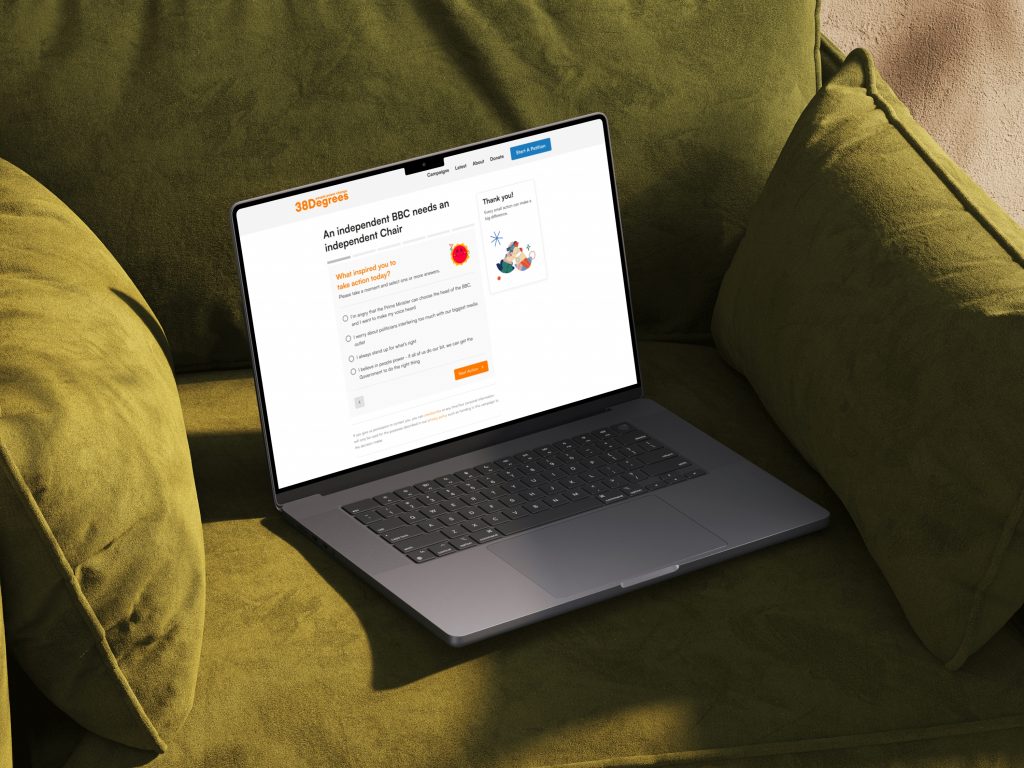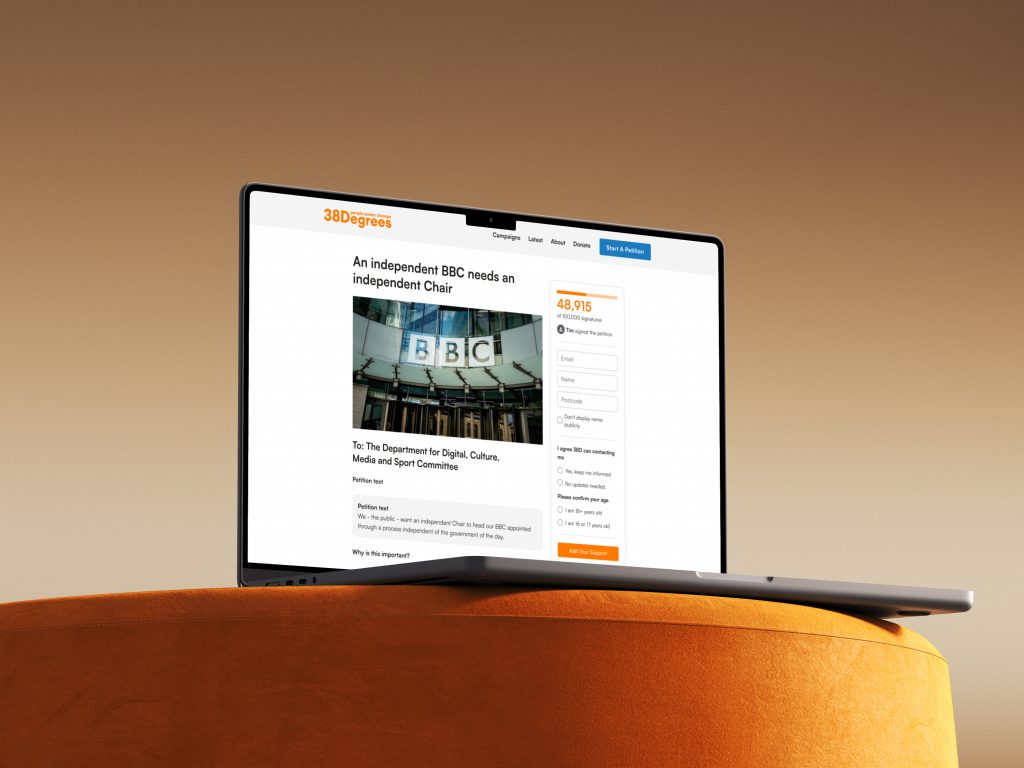38 Degrees - Redesigning the Supporter Experience
2023 – 2025
Client
38 Degrees
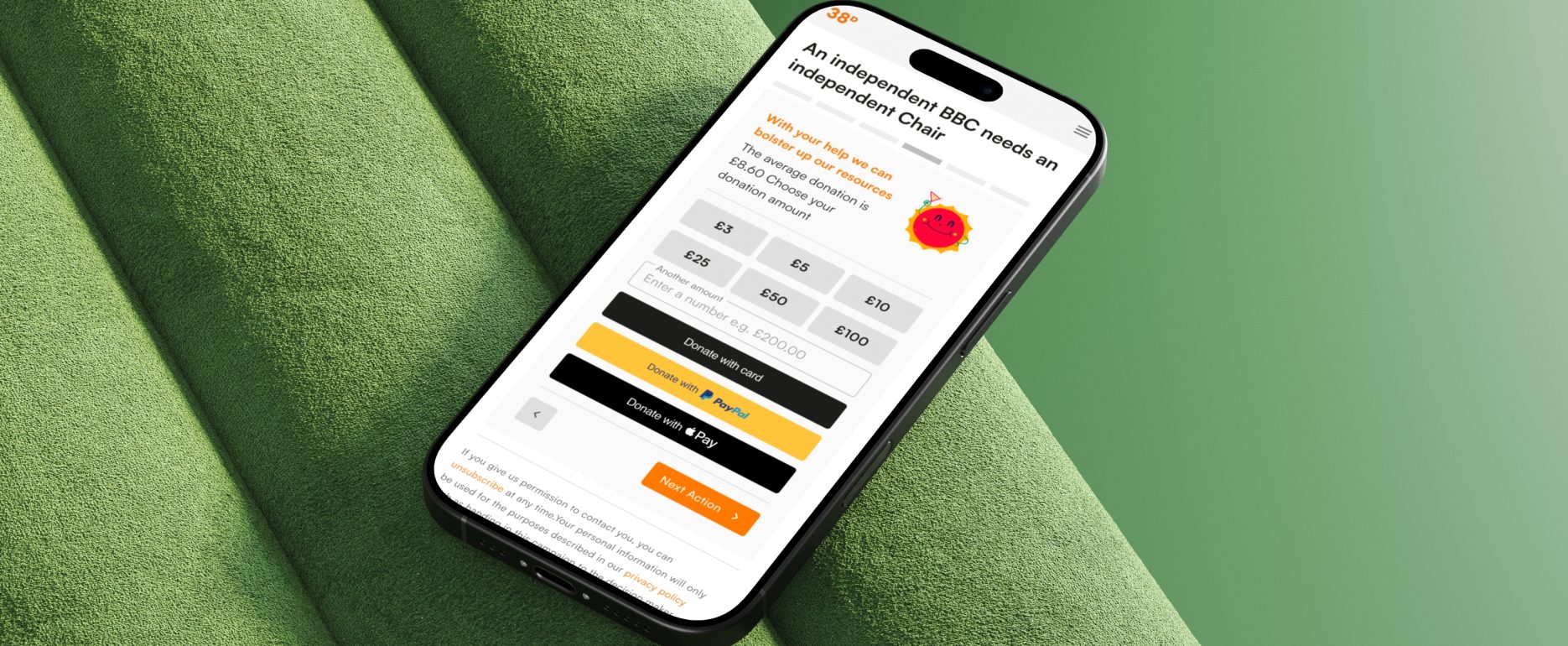
Context
38 Degrees is the UK’s largest community campaigning organisation with over 1 million active supporters. The organisation had outgrown its bespoke internal campaigning tools, which were deeply embedded but increasingly limiting. Leadership needed a clearer technical and product strategy to modernise operations without losing campaign momentum or compromising supporter trust.
I was brought in to lead the design discovery and create a strategic vision that balanced urgent campaign needs with foundational improvements.
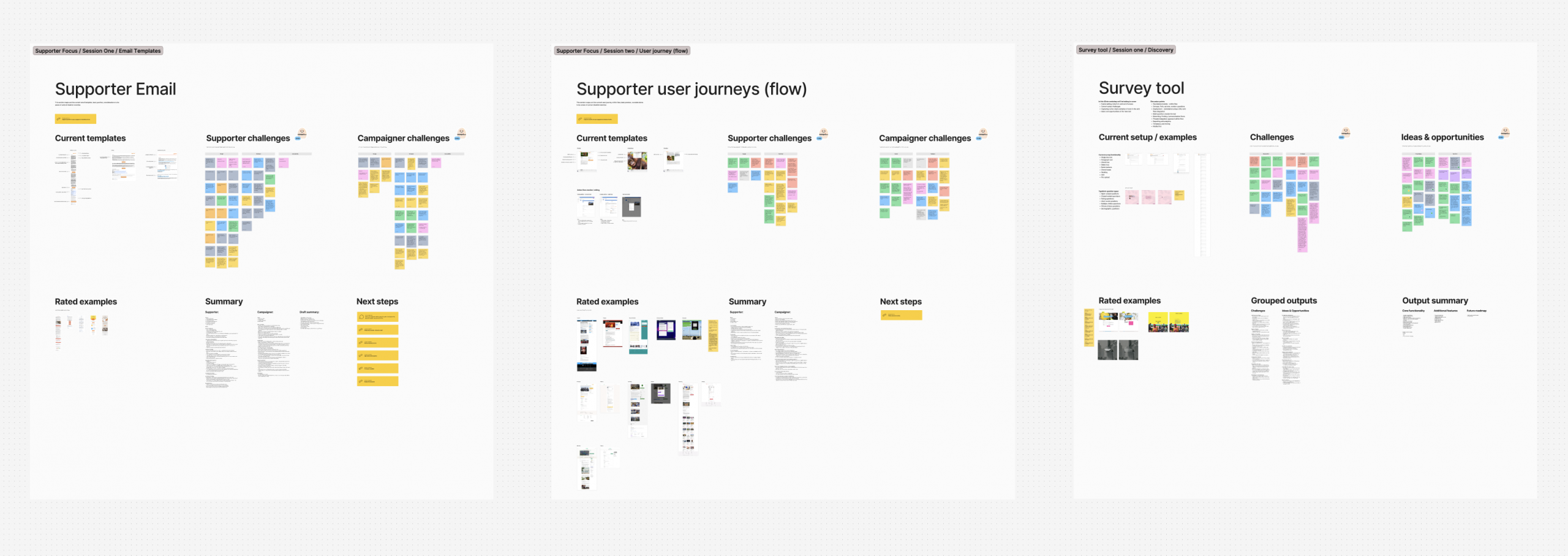
Discovery workshop outputs
The Challenge
The existing platform was built on legacy systems that created significant friction:
- Supporters found campaign actions repetitive and unclear, leading to drop-off
- Campaigners struggled with inflexible tools that slowed campaign creation
- Technical teams faced mounting technical debt and limited scalability
- Leadership were looking for greater engagement and growth opportunities
The organisation needed to understand if they should build, buy, or adapt their technology stack, but they first needed to understand their users and define their actual requirements.

Discovery & Insights board acting as a reference point throughout the project.
Research and Insights
I led a comprehensive discovery phase to ground the project in real evidence:
Internal research:
- 17 stakeholder interviews across campaigns, technology, leadership, and support teams
- Discovery workshops to align teams around supporter experience and campaign delivery
- Mapped pain points across supporter, campaigner, and engineering journeys
Supporter research:
- 15 remote qualitative interviews with supporters
- Surveys deployed to 5,000+ users
- Developed supporter segmentation models
Key insights:
- Supporters wanted quicker, clearer actions with less repetitive content
- Tailored content and layout significantly increased conversion
- Mobile-first experiences were essential but inconsistent
- Trust signals and reduced friction were critical for campaign success
- Younger audiences needed different engagement models to connect

Discovery outputs formed the basis of the design strategy.
Process
I established a structured approach that balanced speed with rigour:
- Discovery workshops to capture current workflows and define future capabilities
- Qualitative and quantitative feedback loops using focus groups, surveys, A/B testing, and session replays
- Design system development to enable faster rollouts and consistent experiences
- Phased prototyping to test inventive engagement models with supporters
- Progressive rollout strategy using PostHog for feature flags and analytics
Throughout, I championed evidence-based design changes with stakeholders who were under pressure to deliver campaigns quickly, ensuring we didn’t sacrifice supporter experience for speed.
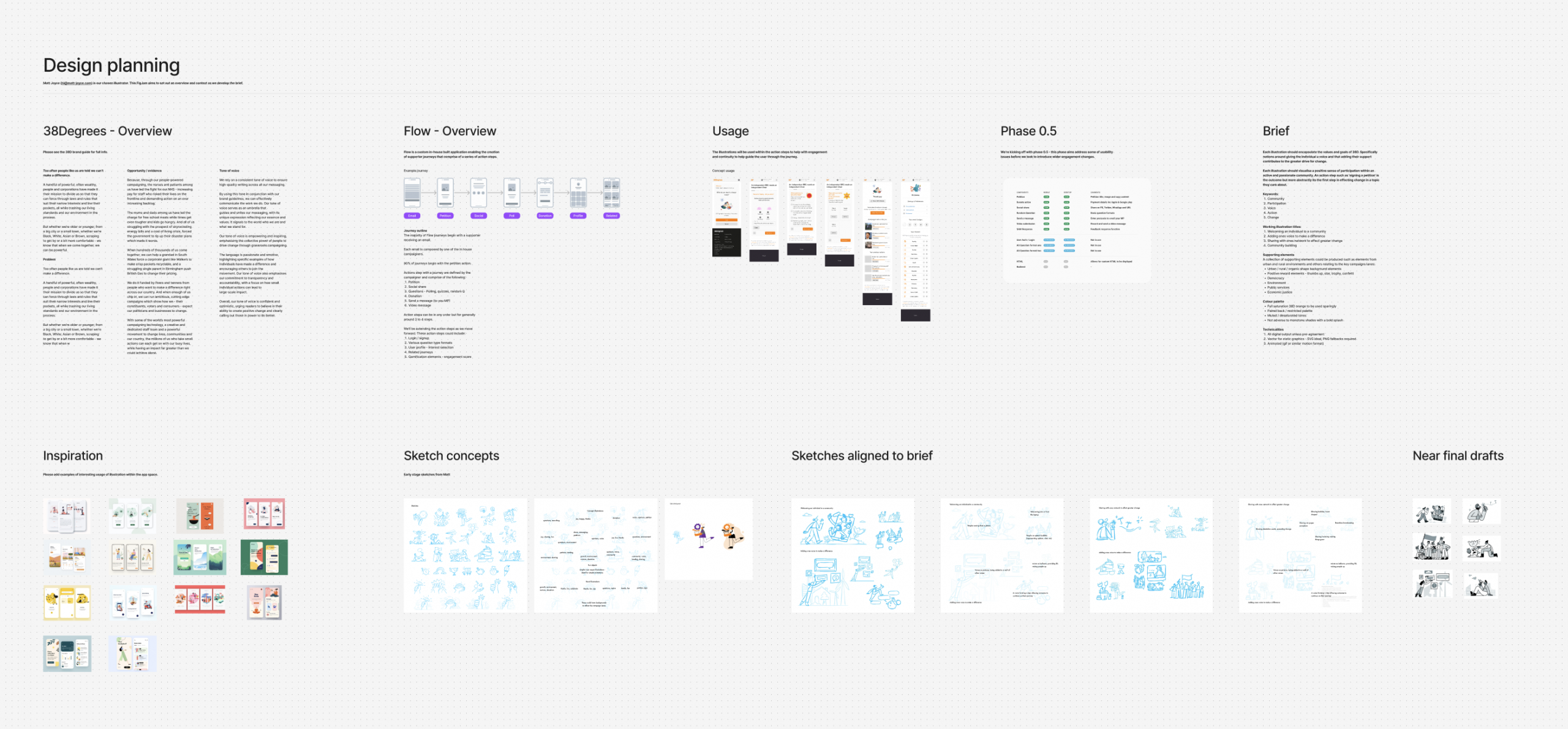
Design planning, prototyping, testing and user rollout.
Solution
I introduced a new presentational layer anchored in a component-based design system:
For supporters:
- Refreshed frontend with clearer campaign actions and improved mobile experience
- Smarter content segmentation to reduce fatigue and increase relevance
- Follow-on action flows that encouraged deeper engagement without overwhelming users
For campaigners:
- Custom email builder with modular component blocks for faster campaign creation
- Flexible campaign layouts that respected existing mental models while introducing improvements
- Enhanced preview and testing tools
Strategic foundation:
- Comprehensive design system built on MUI React component library
- Validated technology roadmap for future platform procurement decisions
- Established user-centred design culture across the organisation
Key Design Decisions
Balancing innovation with continuity
The biggest challenge was introducing improvements without alienating the existing supporter base. I developed designs that maintained familiar patterns while gradually introducing clearer flows and stronger calls to action. Success required constant validation through testing.
Designing within technical constraints
Legacy systems limited what was immediately possible. I had to carefully scope interim improvements that provided immediate supporter value while laying groundwork for longer-term transformation.
Championing evidence over assumptions
Internal stakeholders often had strong opinions about what supporters wanted. I used research findings and A/B test results to shift conversations from opinions to evidence, helping teams make better decisions under pressure.
Impact
Measurable results:
- 10.5% increase in donation conversion through staged A/B testing and rollout
- Significant uplift in follow-on actions via improved flows and content targeting
- Progressive rollout to 100% of user base using feature flags and analytics
Strategic outcomes:
- Established validated foundation for future technology procurement
- Embedded user-centred design culture across campaigns and technology teams
- Created scalable design system enabling faster future improvements
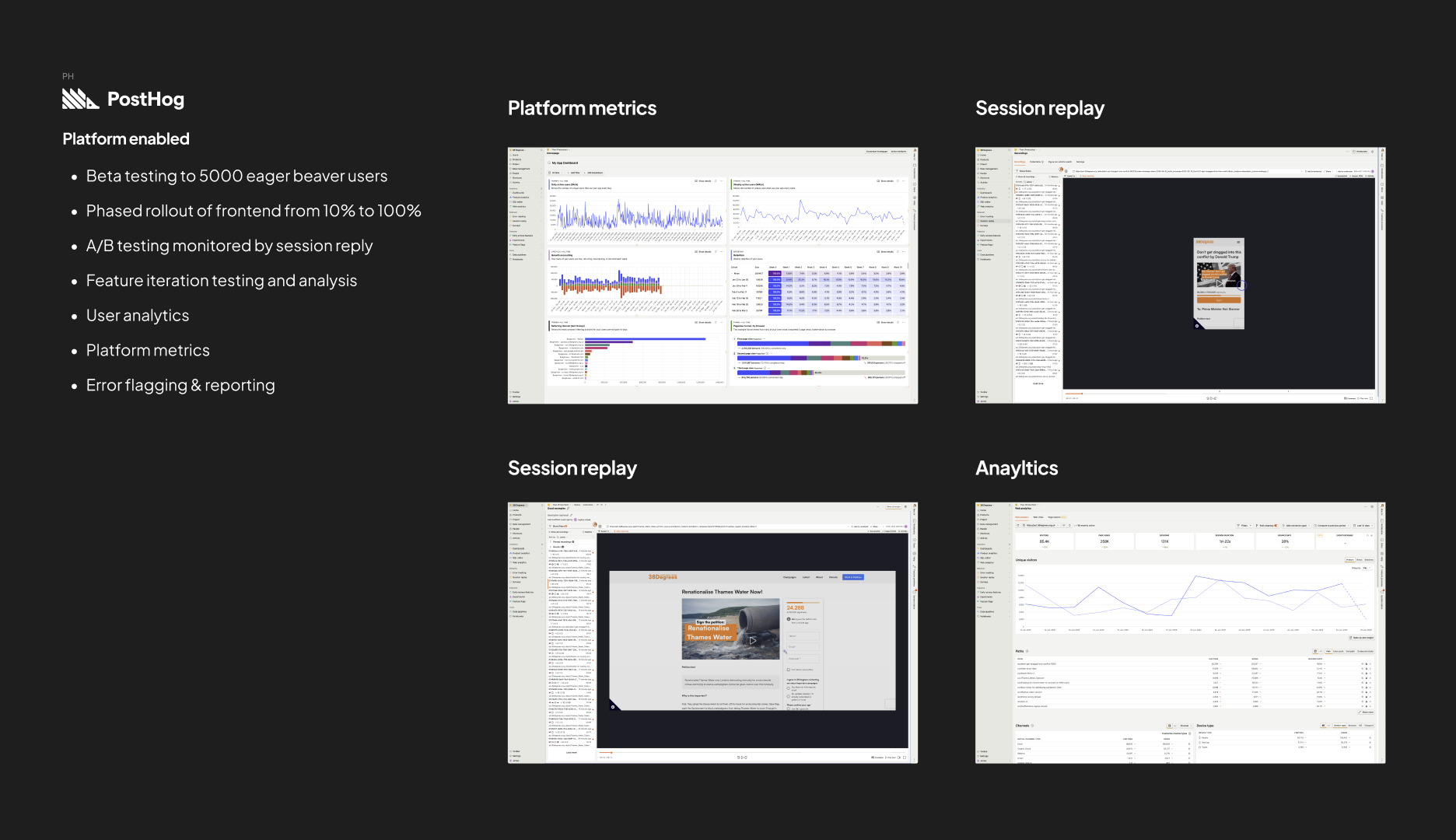
Posthog enabled phased rollout of features, session reply and analytic metrics.
Feedback
Leyton Jones
Director of Product and Technology – 38 Degrees
